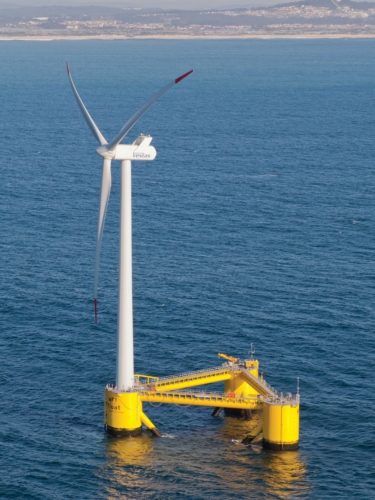Floating Offshore Wind Turbines
July 17, 2012
The idea was started by Professor William E. Heronemus at the University of Massachusetts Amherst in 1972, but the idea never seemed feasible until the 1990’s when the commercial wind industry started to be more established. Today, the technology still mostly consists of expensive prototypes, but a few more years and we could see these floating turbines dominating the offshore market. Floating offshore wind turbines are constructed on land, and may have parts that touch the ocean floor, but they do not require any structural pieces to be connected to the ocean bottom. Similar to regular offshore wind turbines, long electric cables transfer the electricity back to land, and the further you are from shore, the higher the cost to transfer the electricity. A leading prototype in the market today is the 54-meter tall, 2MW floating turbine 5 kilometers off the coast of Agucadoura, Portugal. The turbine sits atop a semi-submersive floating device known as the WindFloat, which was designed by a conglomerate of wind energy companies that make up WindPlus. This particular wind turbine is kept in place by a drag embedment anchor, the same device that is used by offshore oil rigs, meaning that the wind turbine could be transferred easily to different parts of the ocean that are blowing the strongest winds. Most of the money saved is in the construction process, because the entire floating turbine can be built on land, whereas a fixed offshore wind turbine requires highly-expensive underwater construction.  It’s cheaper to have an offshore wind turbine floating on the water surface than it is to build the structural support to the bottom of the ocean. The difference in cost between the two is then exaggerated even more the further you go from the shore, where winds are usually stronger and more efficient for wind turbines anyway.
It’s cheaper to have an offshore wind turbine floating on the water surface than it is to build the structural support to the bottom of the ocean. The difference in cost between the two is then exaggerated even more the further you go from the shore, where winds are usually stronger and more efficient for wind turbines anyway.